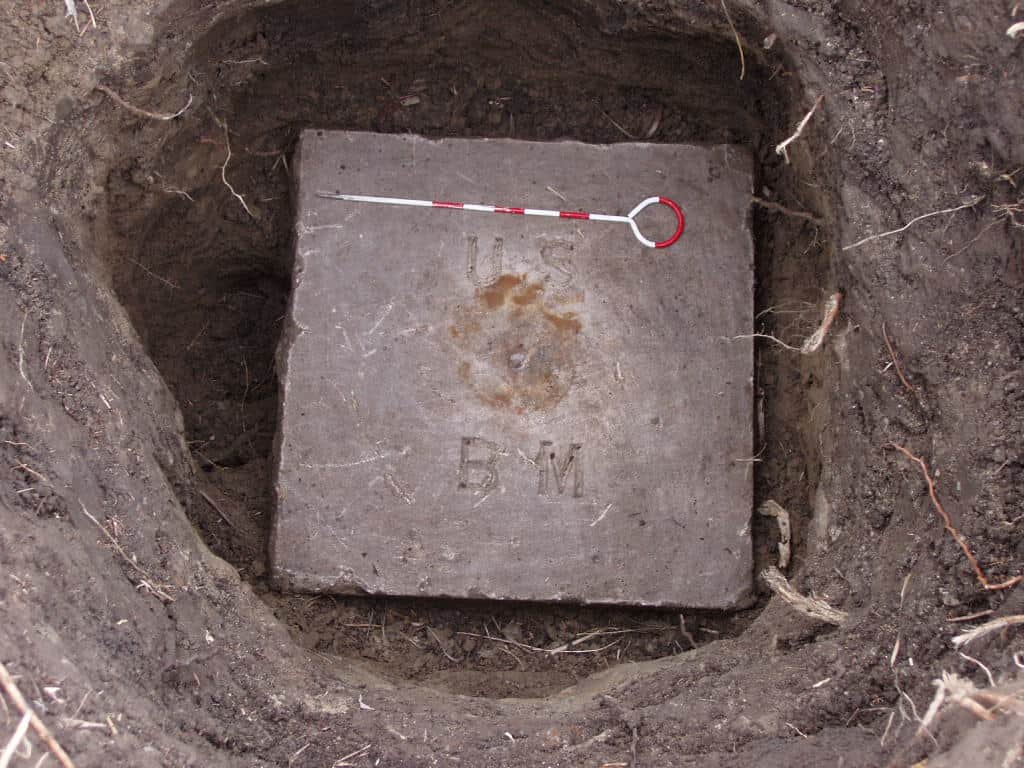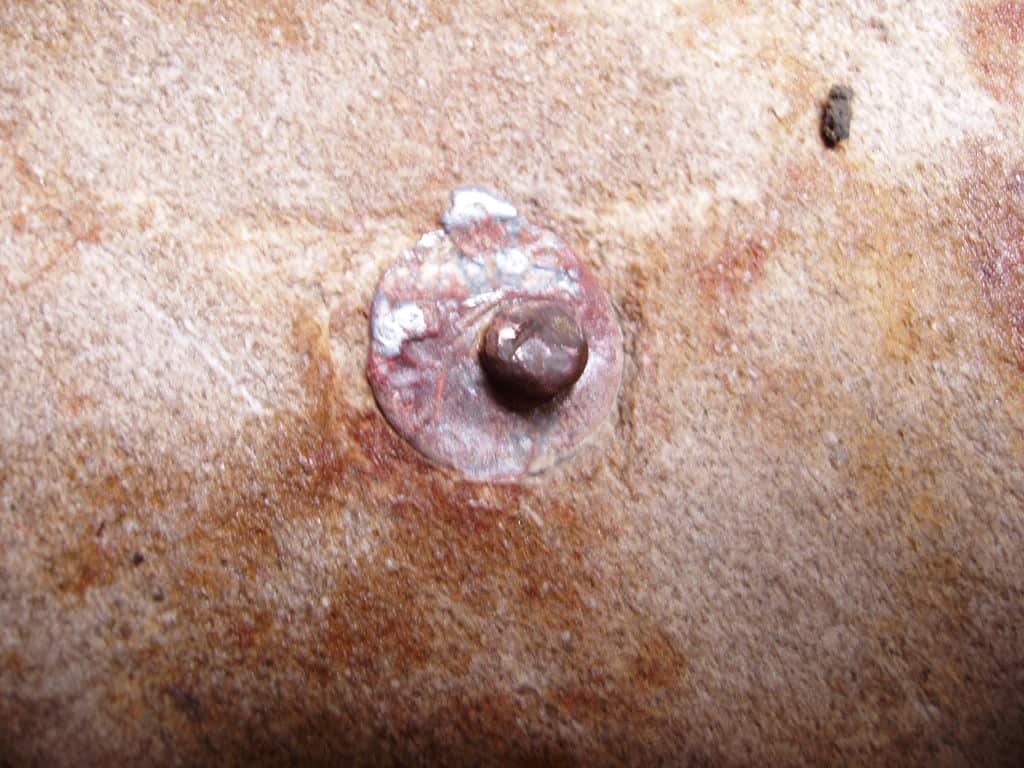I started surveying on a US Army Corps of Engineers survey crew. We set and used a lot of lead plugs with a tack for survey points in concrete. Drill a small hole, pound a piece of lead wool in, and then pound in the tack. Pretty easy to set. Over the years I have found a lot of these on Corps projects (we work on 39 of them regularly. The nice thing is they can be pretty unobtrusive, but yet easy to find if you know what to look for.
Many years pass, and i never set any after i left the Corps. I recently recovered a couple of lead plugs set in 1950's, perfect condition. So I decided to buy some lead wool and set these in the future. Not easy to find...neither Home Depot nor Lowes had any, but I found a 5 lb box online and ordered it. Apparently it is used for sealing around pipes (plumbing and HVAC).
Anyone use these?
Use coiled lead of the same diameter as the rotohammer bit, or star drill if you are really feeling nostalgic, put some in the hole, cut with pruners, pound flat with hammer, punch with nail set or similar and drive tack.
You get the lead at the fishing section of sporting goods stores.
Brass screws were commonly set in sidewalks for property line offsets in the Portland area, especially in the downtown. The lead doesn't usually show at surface, but it's there. The County Surveyors have forbidden the setting of any new ones, recommending that the small 1" brass plugs be used instead.
Lead plugs, usually with more lead and a small brass or copper tack, are also commonly used in Vancouver, B.C. for the same purpose.
You can get all the lead you want in the fishing department of your local Walmart.
I hadn't thought about fishing stores. The way we used to do it was to pack the lead wool into hole, and then pound it with a hammer. As I recall (30+ years ago), the pressure from the hammer would "solidify" the lead and make a nice solid filler, yet still soft enough to punch or easily pound a tack into.
We used to have a coffee can filled with lead weights used on car tires. You can find them in just about any busy intersection for free. Break a piece off and pound it into the hole, set the tack. There was a couple subdivisions back home that have lead plugs with a tack at offsets to just about every pc and pt in the curb gutter.
That's what I use,lead roll from the fishing stores or departments.
Years ago when I attended the University of Arizona I used to walk past a bank, and there was the usual assortment of gum on the sidewalk. There was one particular black piece of gum that persisted for years. A decade later I was surveying that bank and the instrumentman directed me to one of the corners. I looked down and there was the same piece of black gum under the rod, only it wasn't black gum, it was a lead plug, exactly where it was supposed to be, and it had lasted for decades.
I see an advantage over a disk in that no one will be tempted to rip it out for a souvenir. The 1950's marks we found had decent descriptions, including how far from end, etc, so there was no doubt.
The Siuslaw River Bridge in Florence, OR has four disks and two lead plugs at various points on its two walkways. All of them but one lead plug have NGS data sheets. We found the "extra" lead plug one afternoon in 2005 while following data sheet instructions to one of the disks.
Cheers,
m & h
I've worked in several parts of the country over my career and have seen brass screws used only in the Portland, OR area. But have set and found lead/tack or lead/nail set in concrete or rock in every part of the country I've worked in. They will last as long as the concrete or rock they're set in remains undisturbed and are the best option for a monument, reference point. or traverse point in many situations.
I'm not sure why brass screws were not commonly used in other regions I've worked in. Like brass caps, they are less prone to corrosion that ferrous objects like nails, and are fairly distinctive as long as you know that you are or should be looking for a screw.
We use these Ramset Suredrive anchors. Lead plug and tack all in one
One issue we have found is that, while convenient for marks, kerbs are not at all stable in earthquakes. Ground marks stay in position better
rpenci, post: 380415, member: 2429 wrote: lead weights used on car tires. You can find them in just about any busy intersection for free.
A lot of wheel weights are made of steel or zinc these days. They're not suitable for anything other than balancing wheels.
John Hamilton, post: 380438, member: 640 wrote: I see an advantage over a disk in that no one will be tempted to rip it out for a souvenir.
The 1" brass discs with plastic anchor sold by Berntsen are very difficult to remove. Several years ago I set one in error, and after discovering my mistake I went back to reset it in the right position. In order to remove the old one I had to drill a stem-size hole through the top and then use a hammer and chisel to to extract the top from the hole. I left the remains of the stem in place and grouted over it, leaving a flush grout patch.
Souvenir hunters are going to be disappointed if they set their sights on any of these.
Jim Frame, post: 380483, member: 10 wrote: A lot of wheel weights are made of steel or zinc these days. They're not suitable for anything other than balancing wheels.
Jim, that's probably only in California..
The steel weights really suck for larger truck tires. Seems like they are almost twice a big and as a result, don't stay attached very long.
The other draw back is that older trucks sometimes don't have the clearance between the rim and the tie rod end to use the larger weights.
Haven't set lead & tack in a number of years now, although I may order some lead wool and find the star drill so it can be done. L&T does tend to be inconspicuous- perhaps a bit too much so at times- but they do seem to be quite durable as monuments/RP's.

